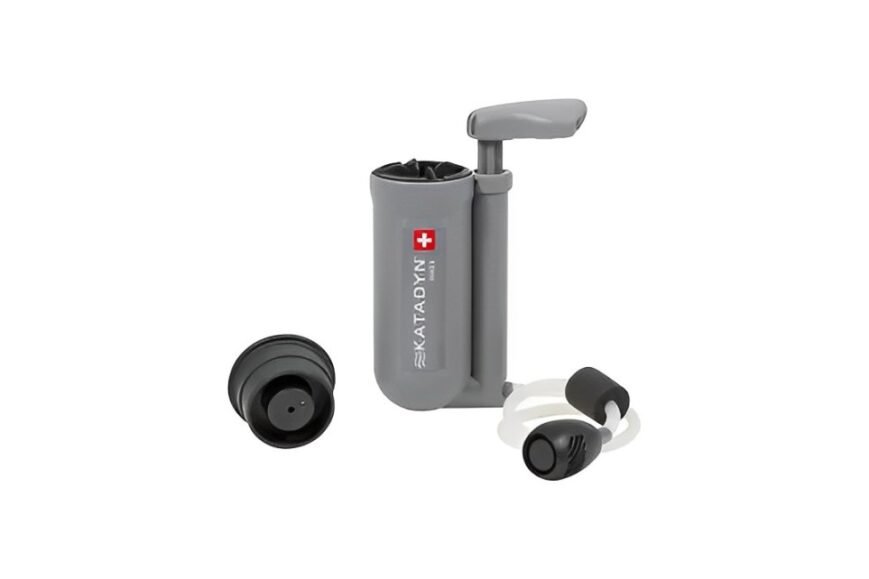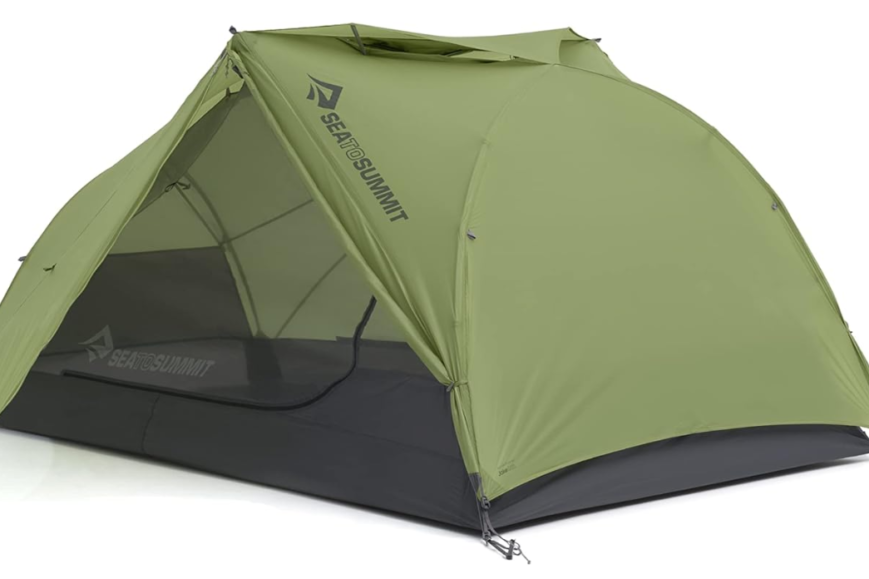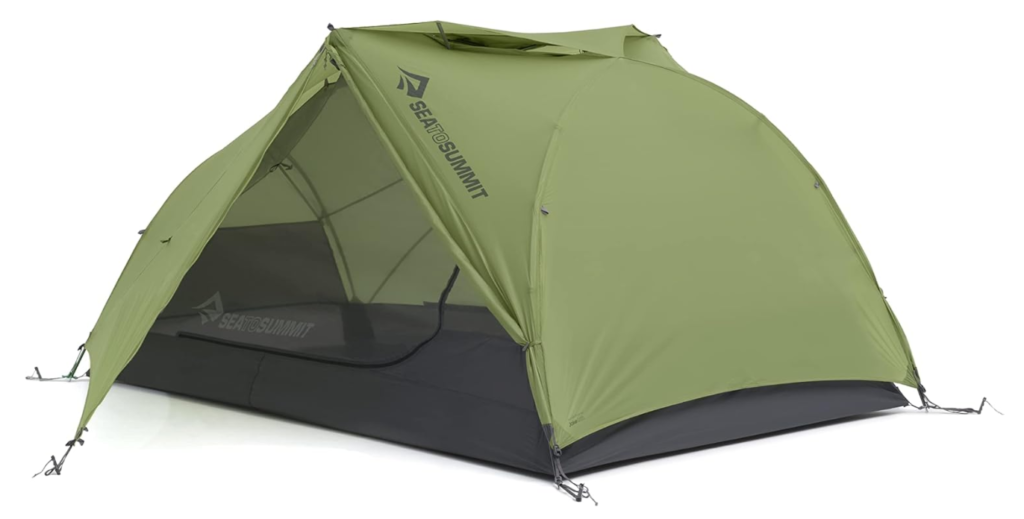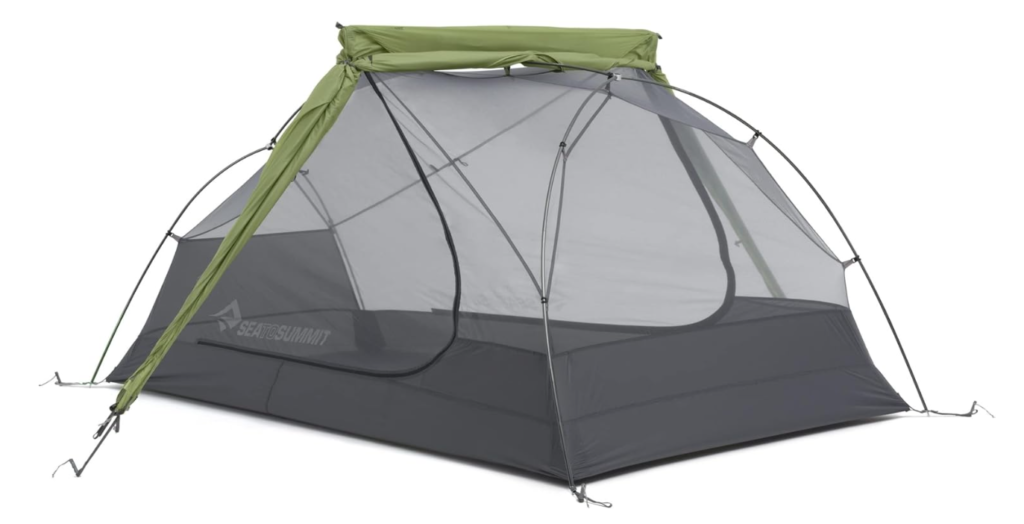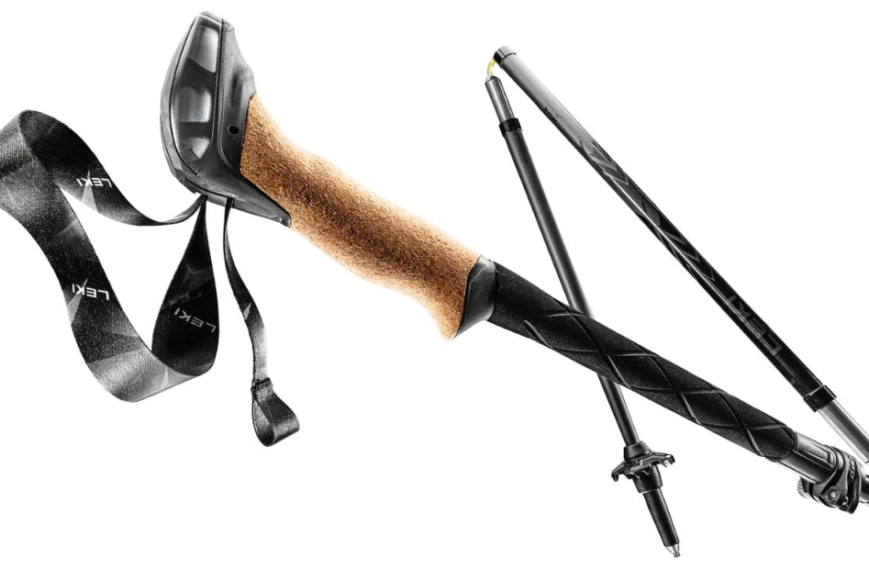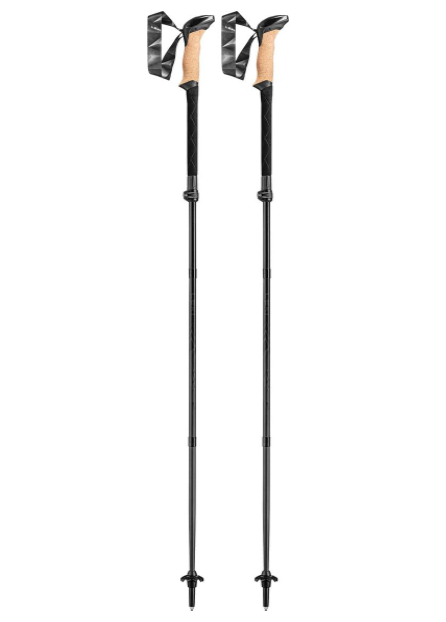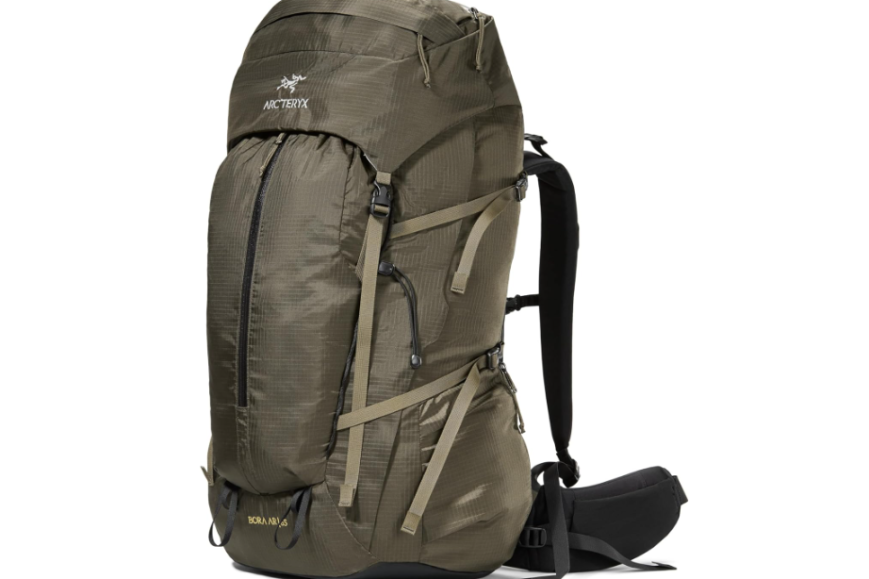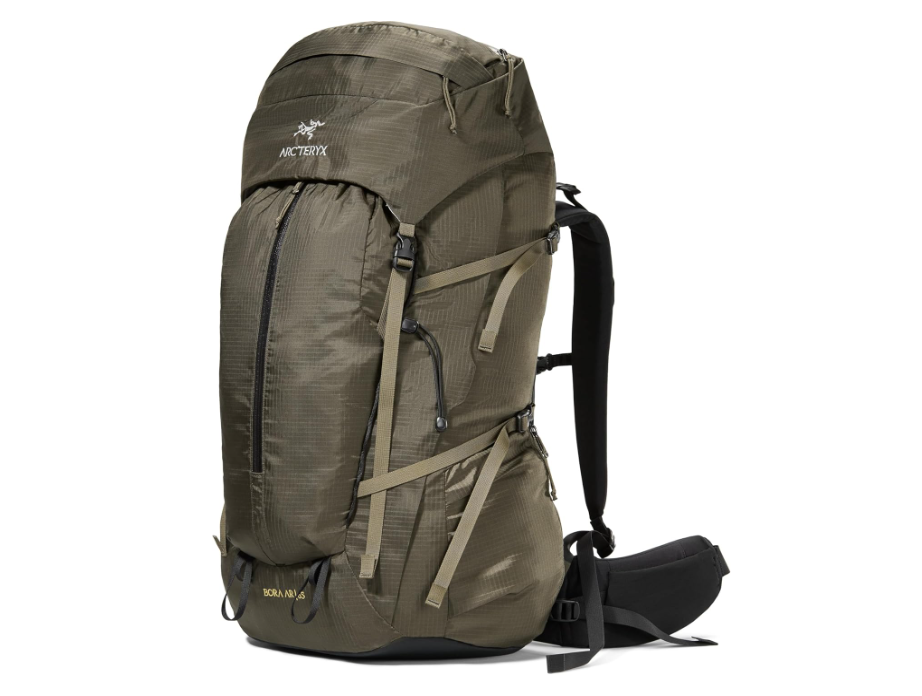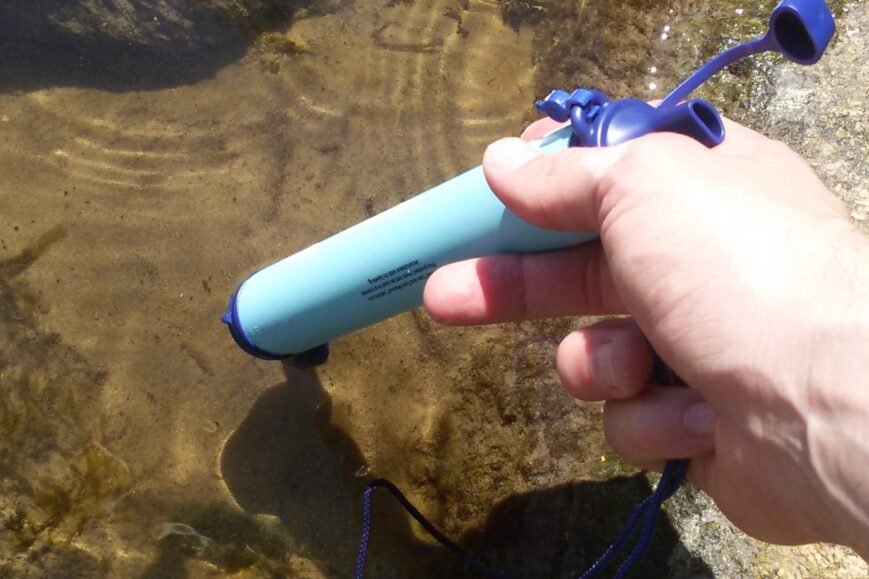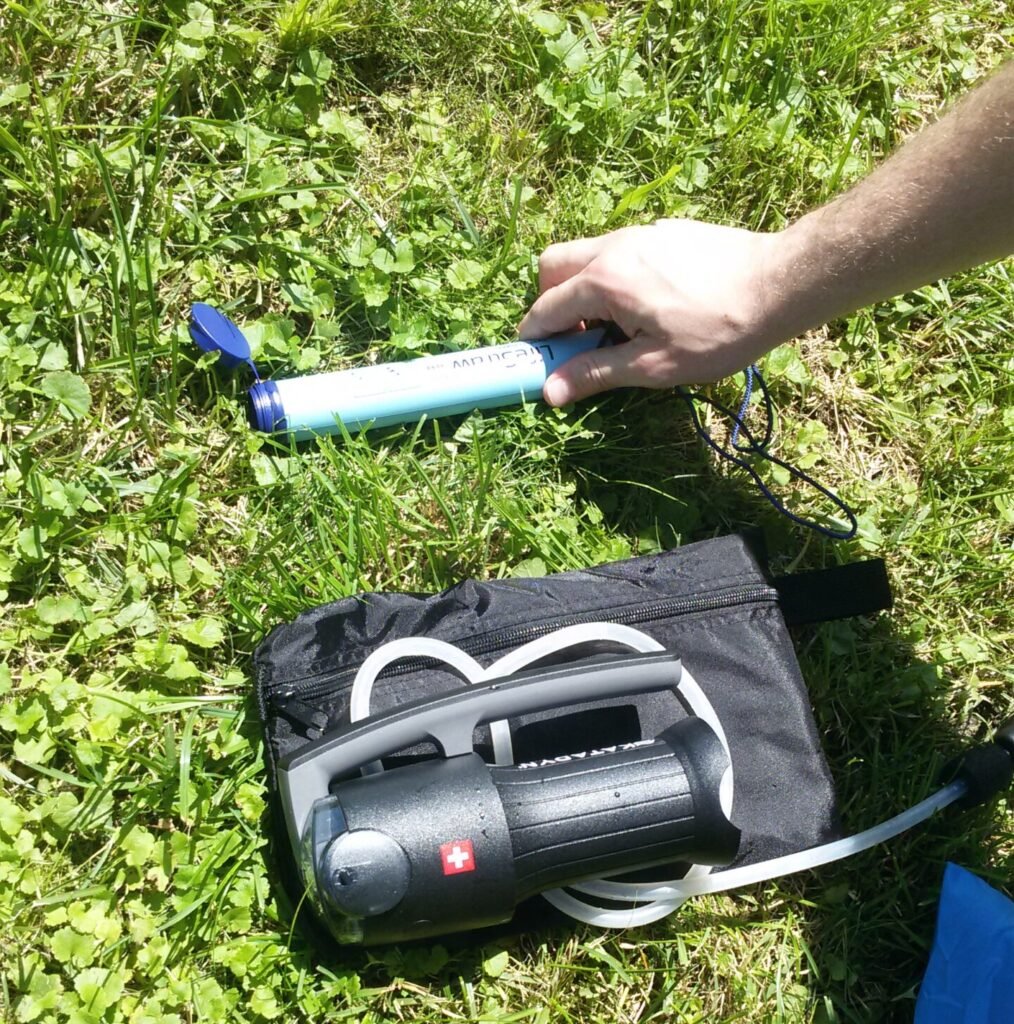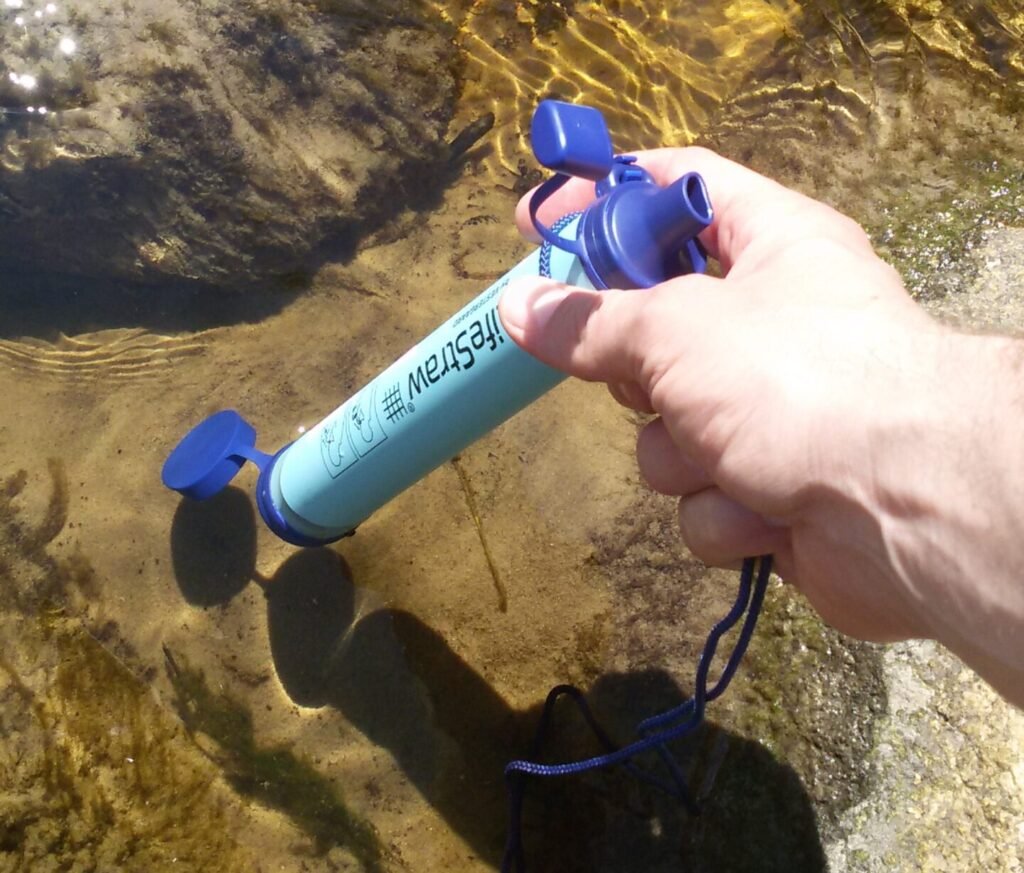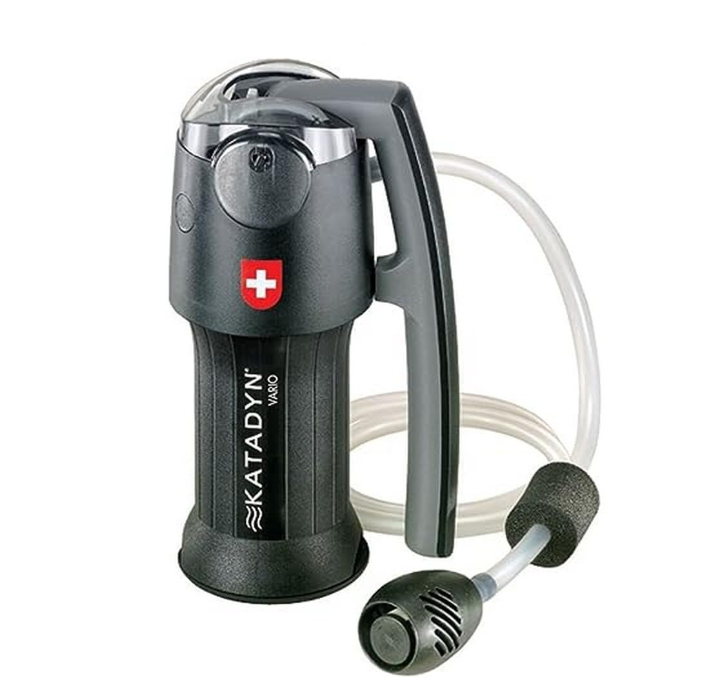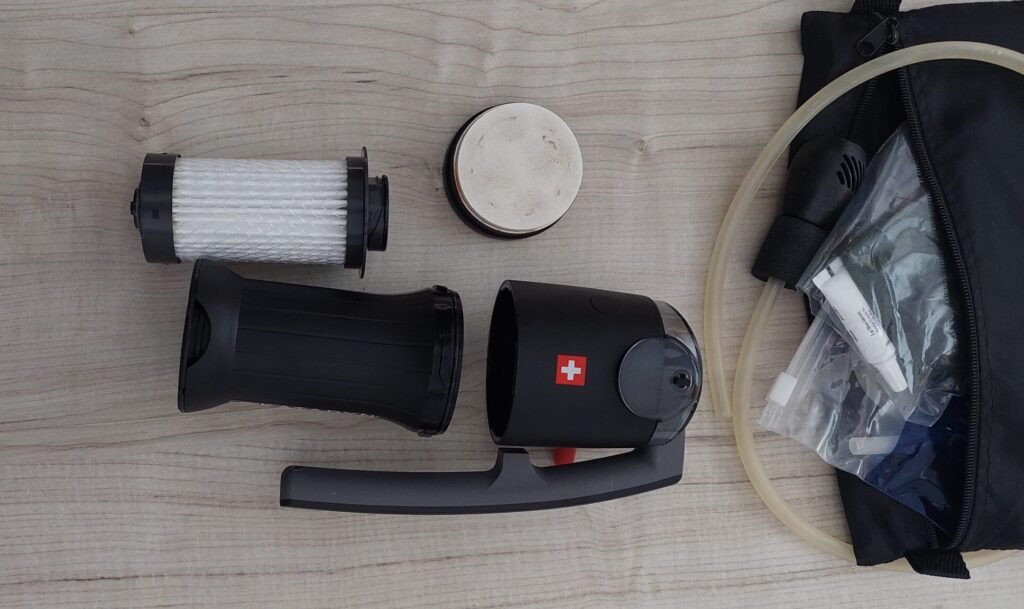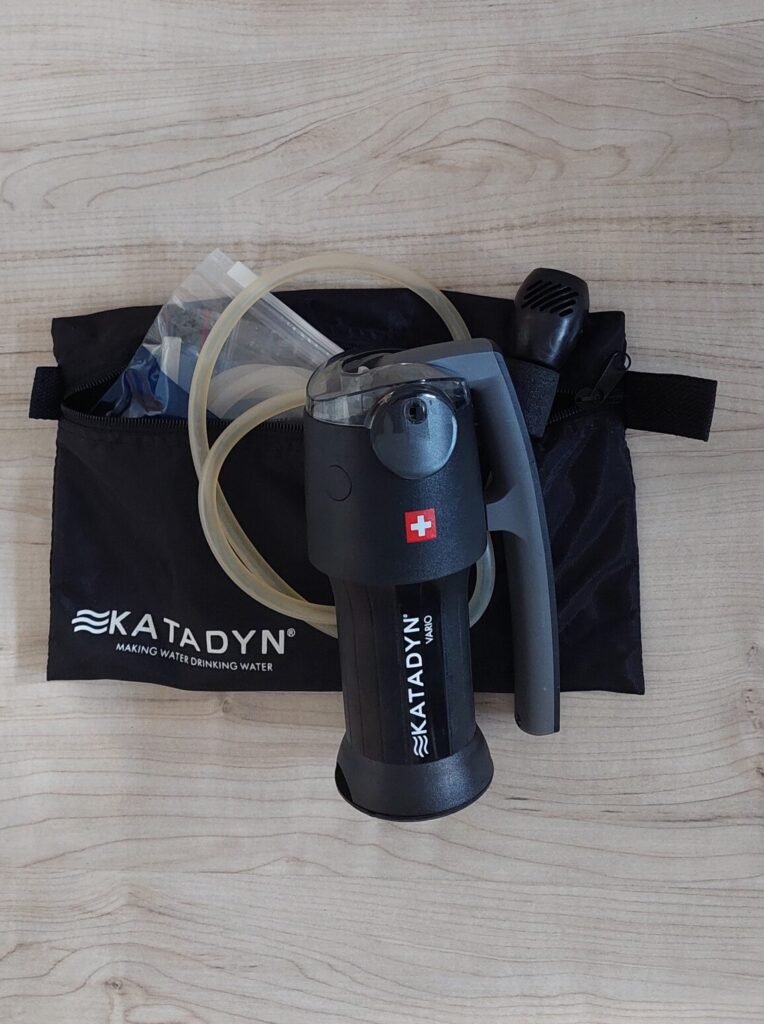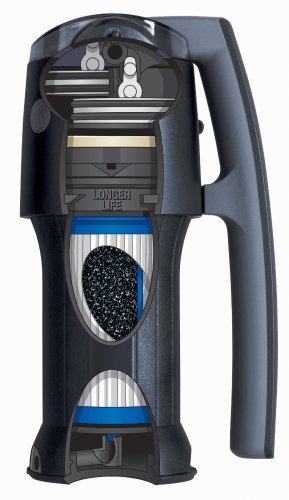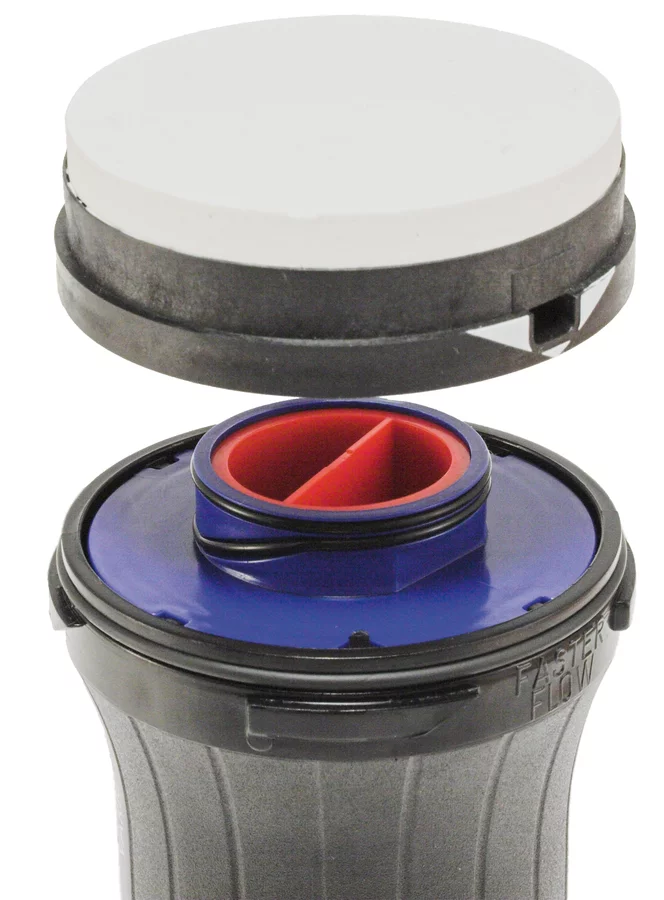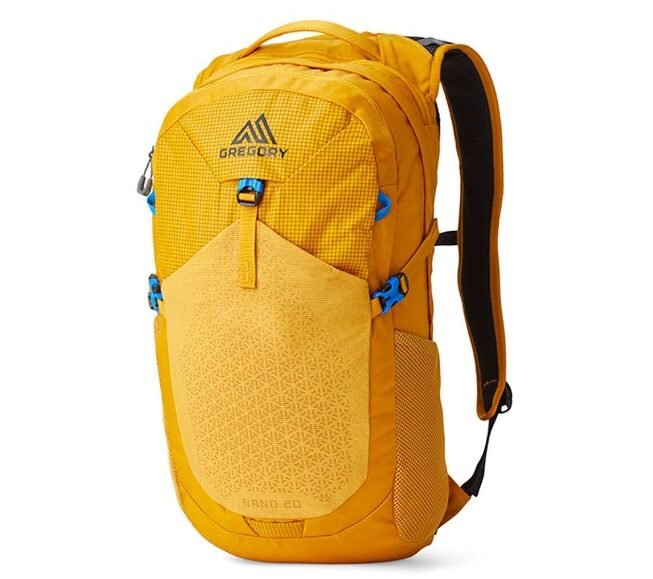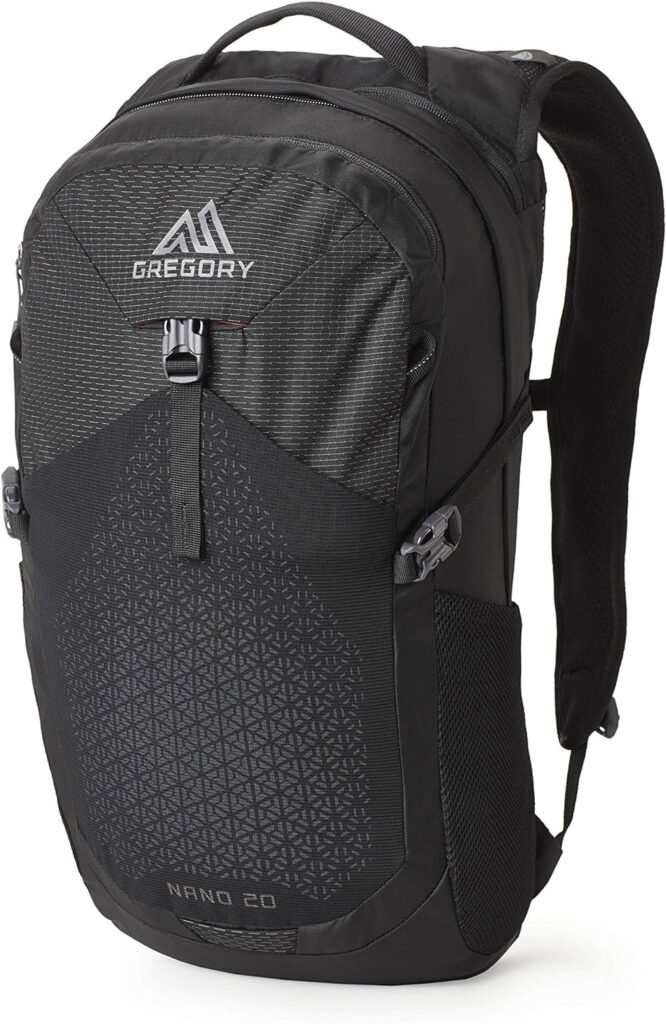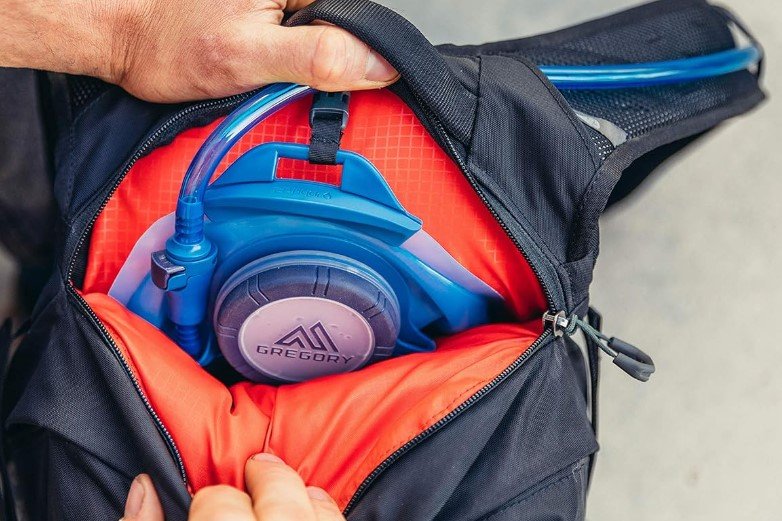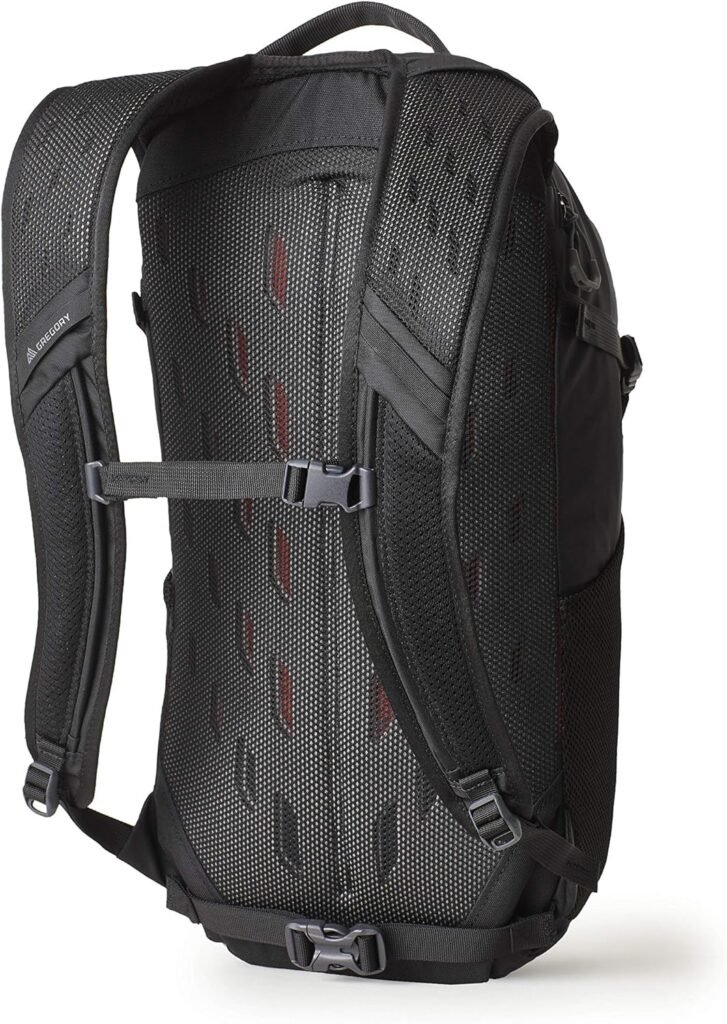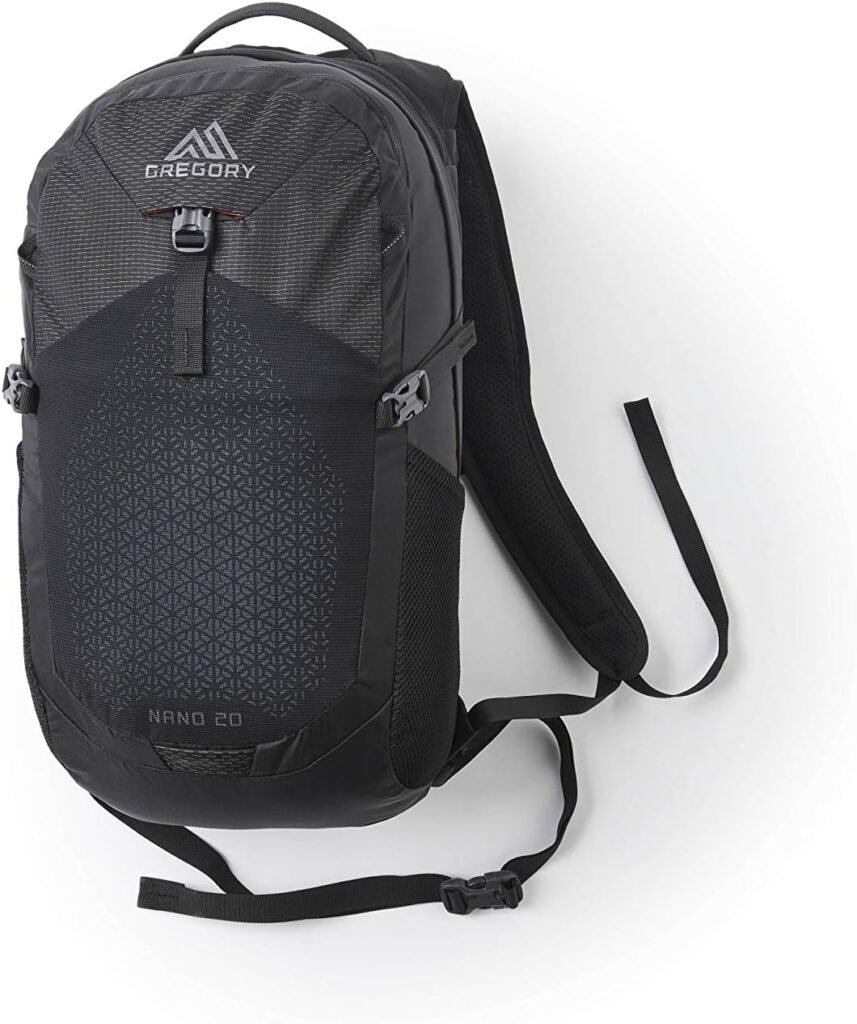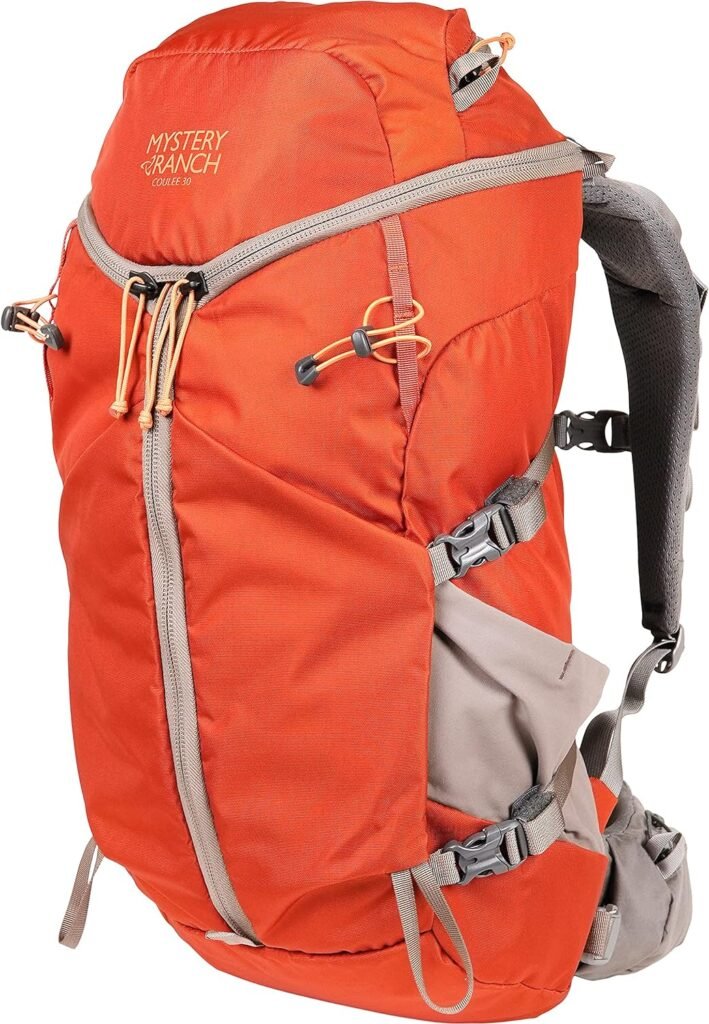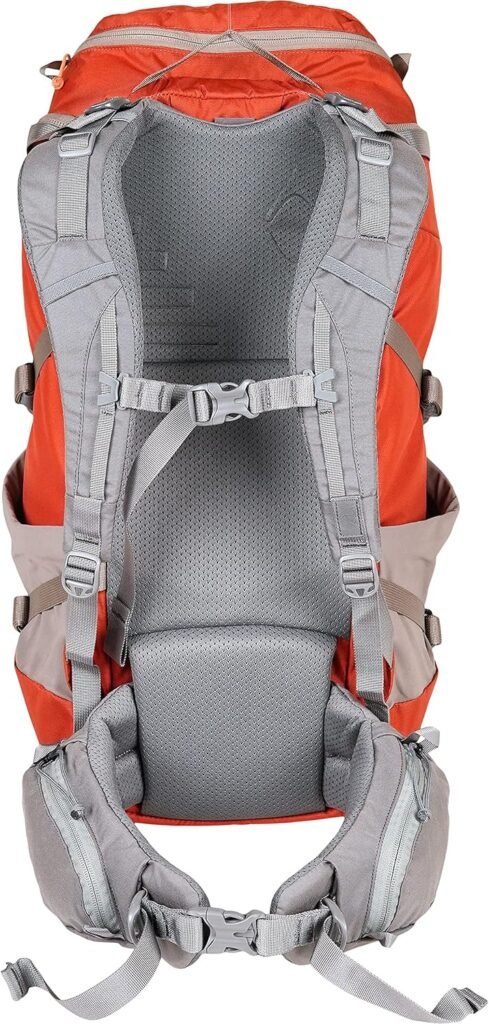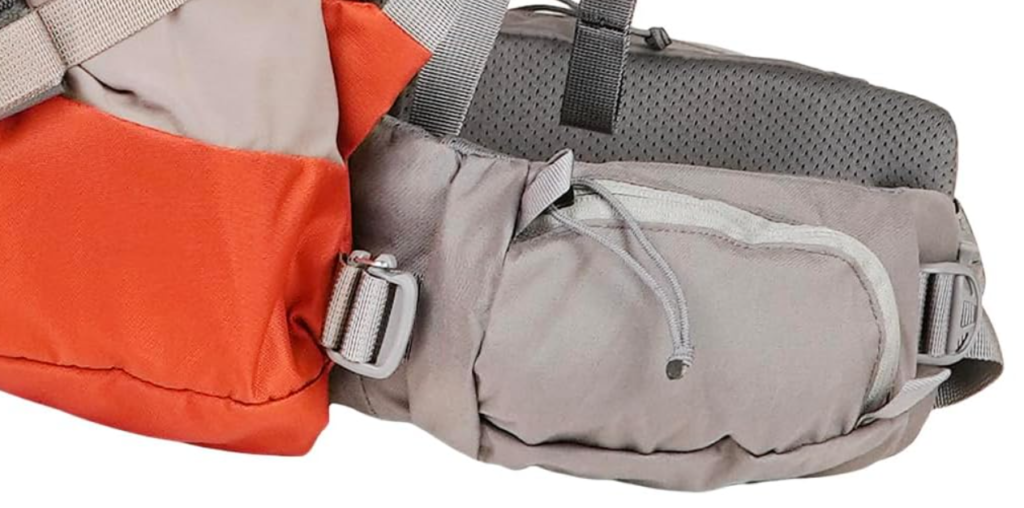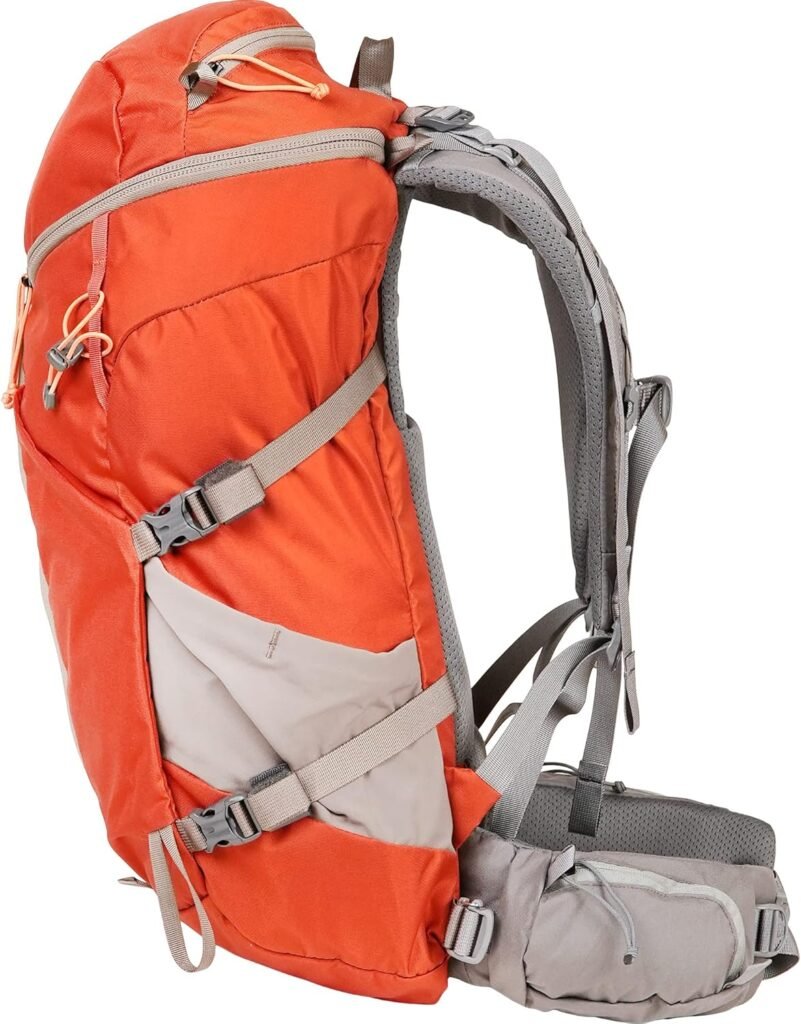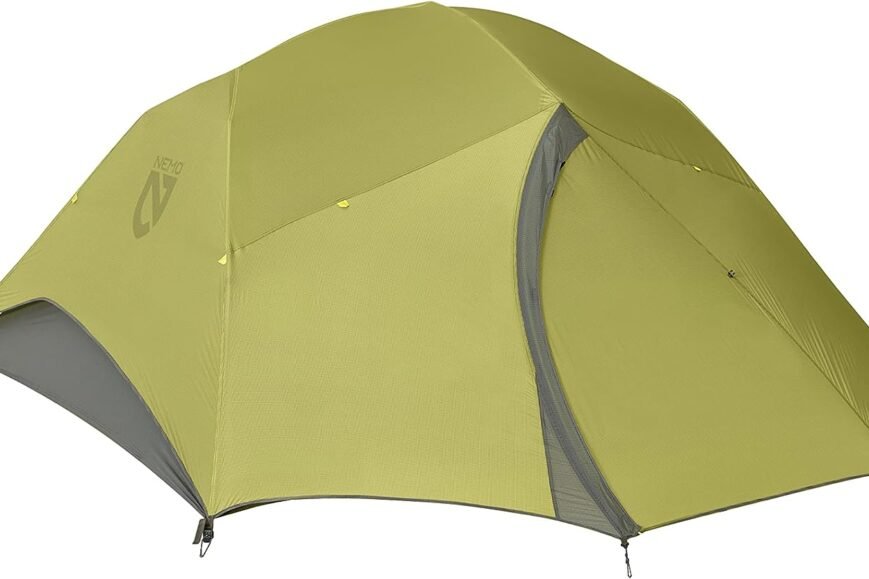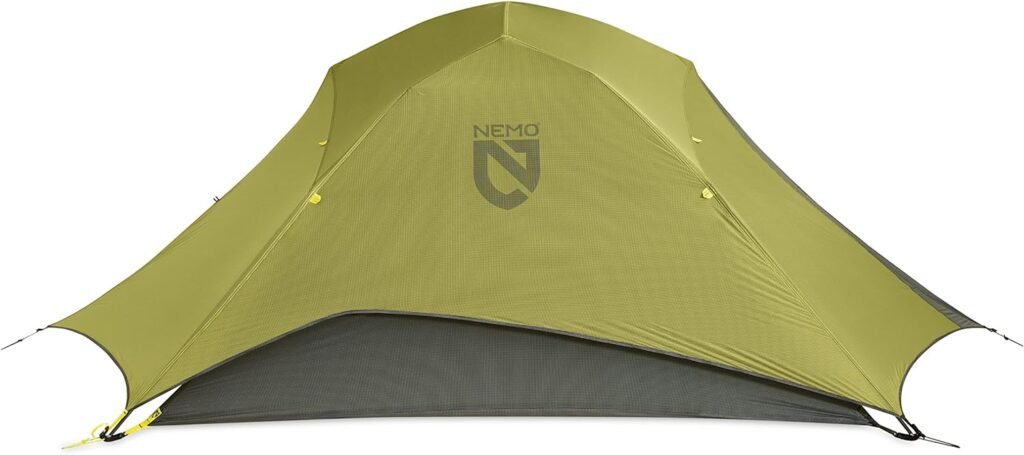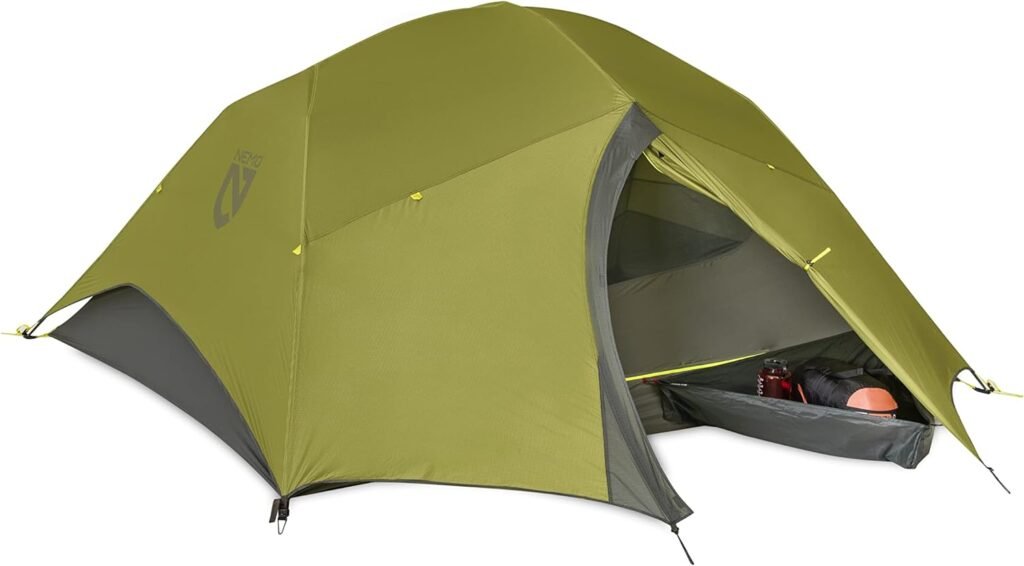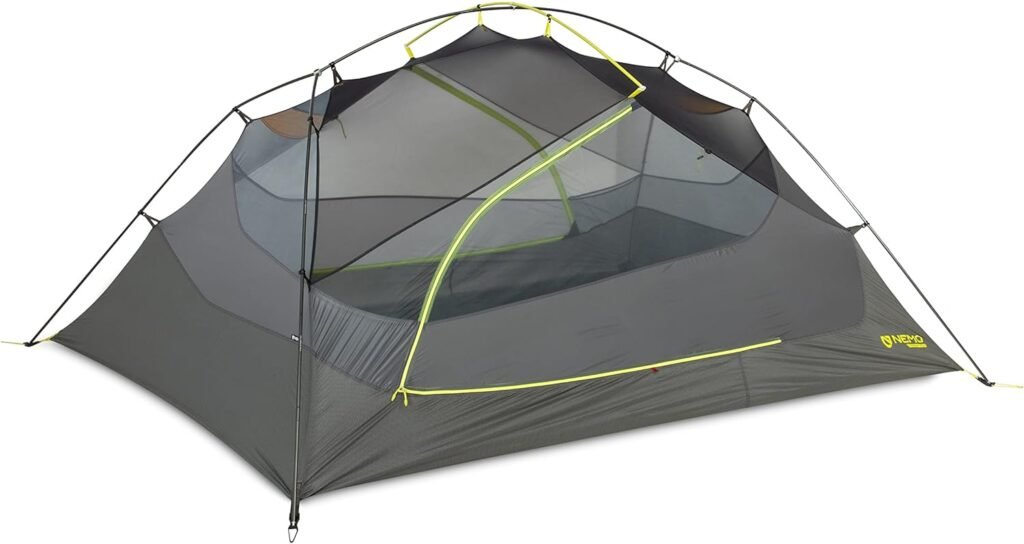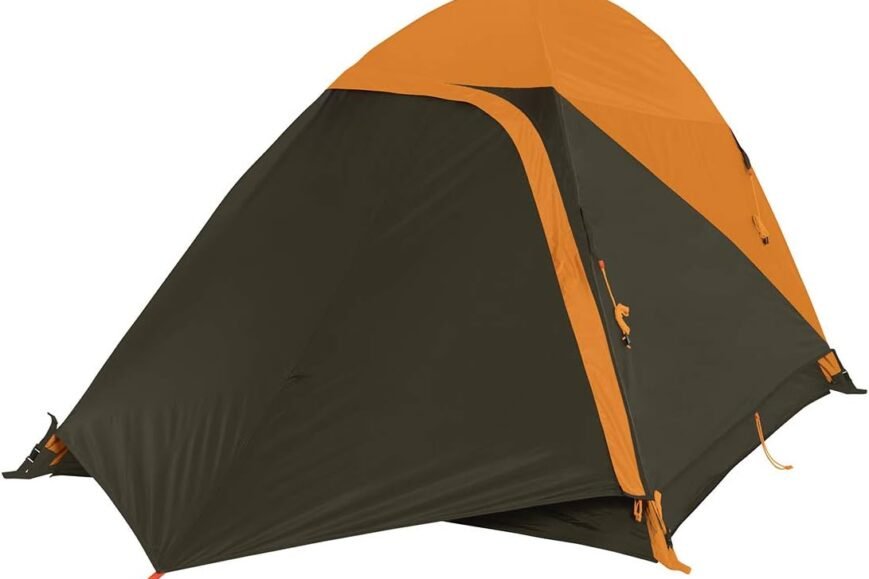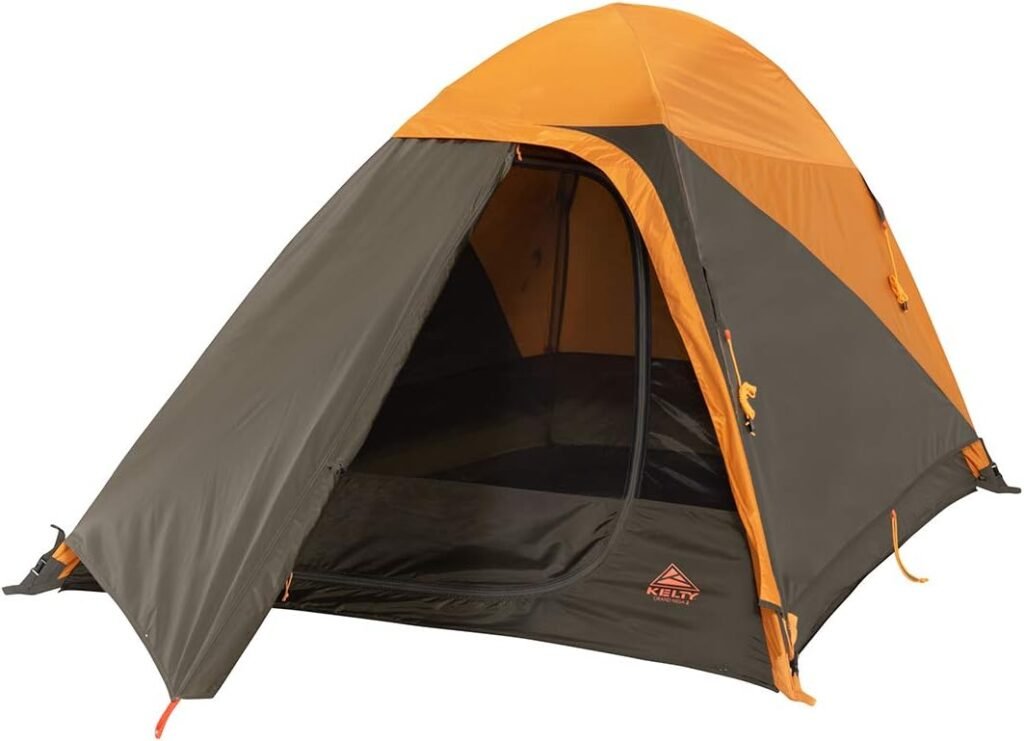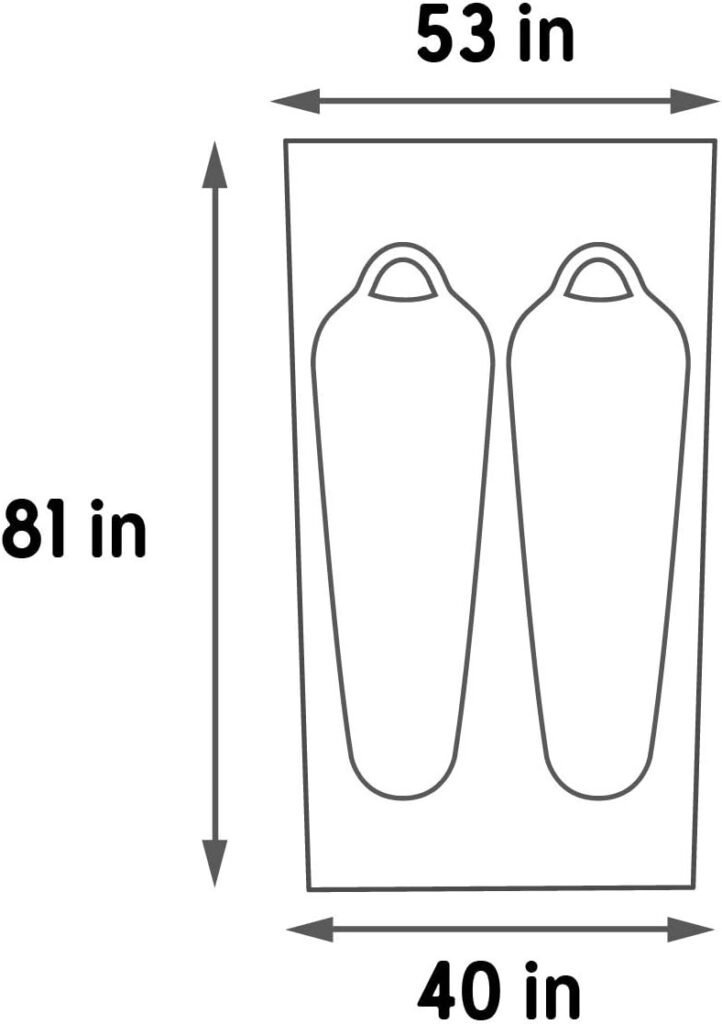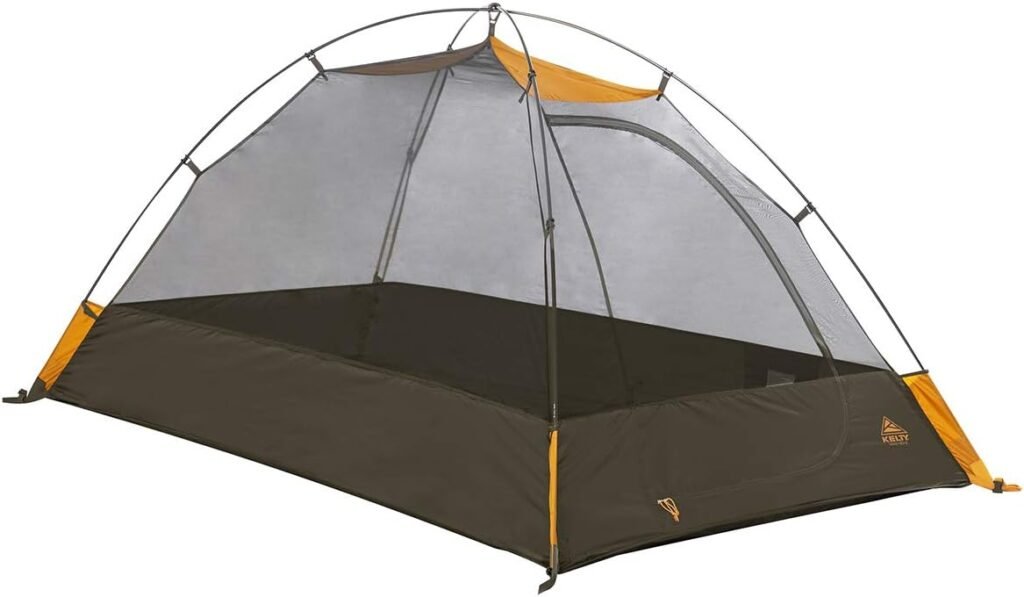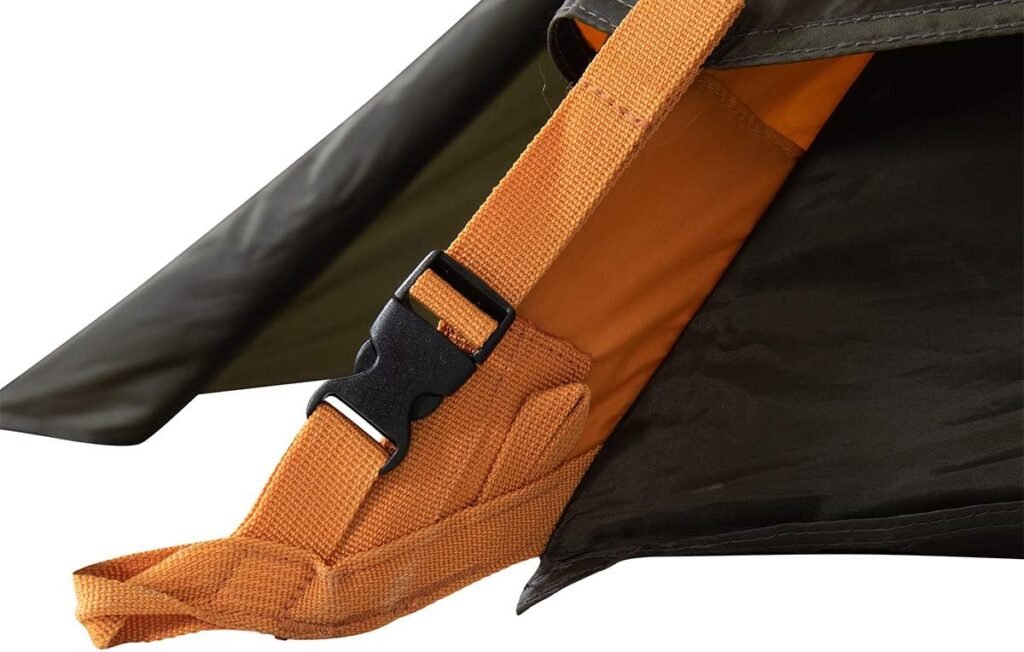Brief Overview
The Katadyn Hiker Microfilter is a well-known and highly respected portable water filtration system designed to meet the needs of outdoor enthusiasts, adventurers, and those seeking a reliable solution for accessing clean drinking water in a variety of environments. As part of Katadyn’s extensive lineup of high-performance water treatment products, the Hiker Microfilter has established itself as a trusted and dependable option for those who demand exceptional water quality and user-friendly functionality.
Engineered with the modern backcountry explorer in mind, the Katadyn Hiker Microfilter combines advanced filtration technology, a durable construction, and a straightforward design to provide users with a practical and efficient means of purifying water from a wide range of natural sources. With a focus on performance, portability, and ease of use, the Hiker Microfilter has become a go-to choice for hikers, campers, and those who participate in a variety of outdoor activities where access to clean drinking water is a critical concern.
Katadyn Hiker Microfilter
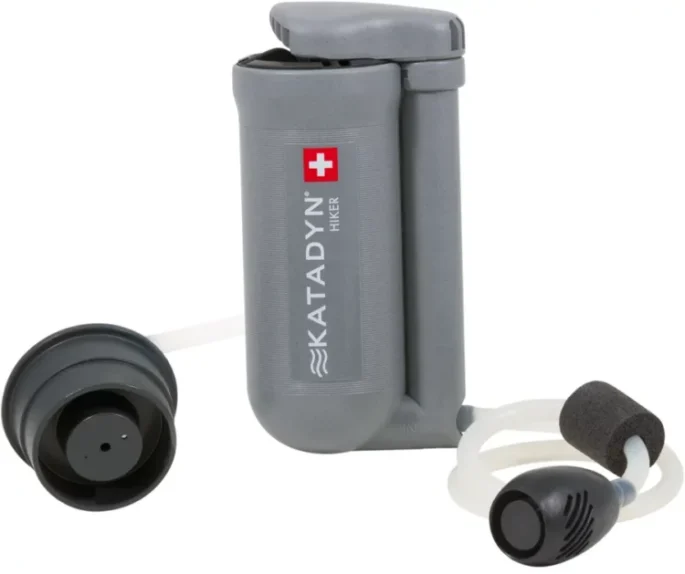
Specifications
• Type: Pump-action microfilter
• Weight: 11 oz (310 g)
• Dimensions: 6.5 x 3.5 x 2.4 inches (16.5 x 8.9 x 6.1 cm)
• Filter Medium: 0.2-micron glass fiber filter
• Filter Pore Size: 0.2 microns (0.0002 mm)
• Flow Rate: Approximately 1 liter per minute
• Cartridge Capacity: Up to 750 liters (200 gallons), depending on water quality
• Removes: Bacteria, protozoa, cysts, algae, spores, sediments, and microplastics
• Compatibility: Fits standard water bottles and hydration bladders
• Field Cleanable: Yes
• Materials: BPA-free, food-grade materials
• Includes: Filter, input and output hoses, cleanable filter protector, bottle adapter, carry bag
First Impressions
Upon first encountering the Katadyn Hiker Microfilter, the immediate impression is one of quality, ruggedness, and purposeful design. The product’s sturdy, yet lightweight construction, combined with its compact dimensions, conveys a sense of durability and portability that is well-suited for the demands of outdoor use.
The Hiker Microfilter’s simple and intuitive layout, with its clearly labeled components and straightforward user interface, further reinforces the impression that this is a well-thought-out and practical solution for water purification.
The filter’s distinct, ergonomic shape and the presence of features like the integrated carry handle and the threaded connection points for attaching to water bottles or hydration systems suggest that the Hiker Microfilter has been designed with the needs of the user in mind, prioritizing both functionality and ease of use.
What We Like
One of the standout features of the Katadyn Hiker Microfilter is its exceptional performance in terms of water filtration. The product’s advanced filtration technology, which utilizes a pleated glass fiber membrane, allows it to effectively remove a wide range of contaminants, including bacteria, protozoa, and particulates, ensuring that the resulting water is safe and clean for consumption.
The Hiker Microfilter’s ability to achieve a high flow rate, up to 1 liter per minute, is particularly impressive, as it allows users to quickly and efficiently purify water, even in high-demand situations. This combination of exceptional filtration quality and efficient operation is a significant advantage, as it enables users to obtain a reliable supply of clean drinking water without the need to invest an excessive amount of time or effort in the purification process.
Another key strength of the Katadyn Hiker Microfilter is its exceptional durability and long-lasting performance. The product’s robust, BPA-free construction and its resistance to damage from impacts, drops, and temperature extremes ensure that it can withstand the demands of even the most challenging outdoor environments. Additionally, the Hiker Microfilter’s replaceable filter cartridge, which is rated for up to 300 gallons (1,135 liters) of use, provides users with a reliable and long-lasting water purification solution that minimizes the need for frequent replacements or maintenance.
The Hiker Microfilter’s versatility in terms of water source compatibility is also a significant asset. The product’s ability to effectively filter water from a diverse range of natural sources, including streams, lakes, and rivers, as well as its compatibility with a variety of water containers and hydration systems, makes it a practical and adaptable solution for a wide range of outdoor activities and travel scenarios.
What We Don’t
While the Katadyn Hiker Microfilter is an exceptional water filtration system that excels in many areas, there are a few aspects of the product that may not appeal to all users.
One potential drawback of the Hiker Microfilter is its relatively limited ability to remove viruses from the water, a capability that may be important for users who plan to travel or adventure in areas with a higher risk of viral contamination. While the product’s filtration effectiveness against bacteria and protozoa is impressive, the need for additional water treatment methods, such as chemical disinfection, to address viral threats may be a concern for some users.
Another consideration for some users may be the Hiker Microfilter’s reliance on a replaceable filter cartridge. While the product’s cartridge is designed to provide an impressive volume of use, the need for periodic replacements may be a concern for users who prefer a more self-contained or maintenance-free water filtration system. Additionally, the availability and cost of replacement cartridges in certain regions or during emergency situations may be a potential limitation for some users.
Finally, the Hiker Microfilter’s slightly heavier weight compared to some of its competitors may be a drawback for users who prioritize the lightest possible gear or who need to minimize the overall weight of their outdoor equipment.
The Specs
Key Features:
- Design: The Katadyn Hiker Microfilter is a compact and portable water filtration system that utilizes a pleated glass fiber membrane to remove contaminants from a wide range of natural water sources.
- Dimensions: The Hiker Microfilter measures approximately 6.5 inches (16.5 cm) in length and 3 inches (7.6 cm) in diameter, with a water capacity of 32 ounces (946 ml).
- Weight: The Katadyn Hiker Microfilter, including the filter cartridge, weighs approximately 11 ounces (312 grams), making it a relatively lightweight solution for outdoor and travel use.
- Convenient Features: The Hiker Microfilter features a durable, BPA-free construction and is designed to withstand the demands of outdoor use, including resistance to impacts, drops, and temperature extremes. The product’s replaceable filter cartridge is rated for up to 300 gallons (1,135 liters) of use, providing users with a long-lasting water filtration solution.
Ease of Use
One of the standout features of the Katadyn Hiker Microfilter is its exceptional ease of use, which is designed to make the process of obtaining clean drinking water as straightforward and efficient as possible for users of all experience levels.
The Hiker Microfilter’s intuitive and user-friendly design is a key contributor to its ease of use. The product’s clearly labeled components, such as the integrated carry handle, the threaded connection points, and the integrated filter cartridge, provide users with a clear understanding of how to assemble, operate, and maintain the Hiker Microfilter, even in the midst of outdoor activities or travel situations.
The Hiker Microfilter’s simple and streamlined operation further enhances its user-friendliness. Users simply need to attach the filter to a water source, such as a stream or a water bottle, and then use the integrated pump mechanism to draw the water through the pleated glass fiber membrane, effectively removing contaminants and delivering clean, safe drinking water. This straightforward approach, combined with the product’s high flow rate, allows users to quickly and efficiently purify water, even in time-sensitive or high-demand scenarios.
Another factor that contributes to the Hiker Microfilter’s ease of use is its maintenance and replacement process. The product’s replaceable filter cartridge is designed for simple and straightforward installation, requiring no tools or specialized knowledge. This streamlined approach to maintenance helps to ensure that users can easily maintain the Hiker Microfilter’s peak performance and water filtration capabilities, even in extended use scenarios or during emergency situations.
Additionally, the Hiker Microfilter’s compact size and lightweight construction make it easy to integrate into a wide range of outdoor gear and equipment, further enhancing its overall user-friendliness and versatility. Whether users are embarking on a day hike, a multi-day backpacking trip, or preparing for an emergency scenario, the Hiker Microfilter’s portability and ease of use make it a practical and accessible solution for obtaining clean drinking water.
Overall Performance
Functionality
The Katadyn Hiker Microfilter delivers exceptional performance in terms of its overall functionality as a water filtration system. The product’s advanced filtration technology, which utilizes a pleated glass fiber membrane, allows it to effectively remove a wide range of contaminants, including bacteria, protozoa, and particulates, ensuring that the resulting water is safe and clean for consumption.
One of the key factors that contributes to the Hiker Microfilter’s impressive functionality is its ability to achieve a high flow rate, up to 1 liter per minute. This efficient operation not only enhances the user experience by reducing the time and effort required to purify water but also makes the Hiker Microfilter a practical solution for use in a variety of scenarios, from individual hydration needs to group-based water treatment requirements.
The Hiker Microfilter’s versatility in terms of the water sources it can treat is another significant aspect of its functionality. The product’s compatibility with a diverse range of natural water sources, from streams and lakes to rivers and springs, allows users to confidently purify water in a wide variety of outdoor and travel scenarios, further reinforcing its suitability as a reliable and adaptable water filtration solution.
Filtration Quality
The Katadyn Hiker Microfilter‘s advanced filtration capabilities are highly impressive, with the product’s performance exceeding the expectations of many users in the portable water filtration market.
The Hiker Microfilter’s pleated glass fiber membrane is designed to remove 99.9999% of bacteria and 99.9% of protozoa, ensuring that the resulting water is safe for consumption, even in the most challenging environments. Additionally, the product’s ability to effectively remove particulates and other contaminants, such as sediment and organic matter, further enhances the quality of the purified water, making it a comprehensive and reliable solution for users who require the highest levels of water purity.
While the Hiker Microfilter’s filtration capabilities do not extend to the removal of viruses, which may be a concern for users in certain regions or scenarios, the product’s exceptional performance in addressing bacterial and protozoan threats reinforces its status as a highly effective and dependable water filtration system for a wide range of outdoor, travel, and emergency preparedness applications.
Best Uses
The Katadyn Hiker Microfilter is a versatile and practical water filtration system that can be utilized in a variety of outdoor, travel, and emergency preparedness scenarios.
Outdoor Activities
The Hiker Microfilter is an excellent choice for hikers, campers, and other outdoor enthusiasts who need to purify water from natural sources, such as streams, lakes, or rivers. The product’s compact size, lightweight construction, and durable design make it a practical and reliable solution for integration into a variety of outdoor gear and equipment, ensuring that users have access to clean drinking water wherever their adventures take them.
Travel and Adventure
The Hiker Microfilter is also a valuable resource for travelers, whether they are exploring remote destinations or visiting areas with questionable water quality. The product’s versatility in terms of the water sources it can treat, combined with its ease of use and portability, make it an ideal choice for integration into travel kits and luggage, providing users with a dependable means of ensuring the safety of their drinking water while on the go.
Emergency Preparedness
The Katadyn Hiker Microfilter‘s exceptional performance, combined with its long-lasting filter cartridge and resistance to environmental stressors, make it an invaluable asset for emergency preparedness and disaster response planning. The product’s ability to quickly and efficiently purify water from a wide range of sources can be a critical resource in times of crisis, ensuring that users have access to a reliable and safe water supply when it is needed most.
Comparison to Other Water Filters on the Market
When compared to other portable water filtration systems on the market, the Katadyn Hiker Microfilter stands out for its exceptional performance, user-friendly design, and overall value proposition.
One notable competitor is the Sawyer Squeeze, a popular water filter that utilizes a hollow fiber membrane to remove contaminants. While the Sawyer Squeeze is known for its simplicity and affordability, the Hiker Microfilter offers a more comprehensive water filtration solution, with its ability to achieve a higher flow rate and its more robust, durable construction.
Another system that warrants comparison is the Platypus GravityWorks, a gravity-fed water filter that is often praised for its ease of use and efficient operation. While the GravityWorks may be better suited for certain group-based or base camp scenarios, the Hiker Microfilter’s pump-based design and its compatibility with a wider range of water containers and hydration systems make it a more versatile and practical choice for individual users and those engaged in more mobile outdoor activities.
Compared to the MSR MiniWorks EX, a well-regarded ceramic water filter, the Hiker Microfilter offers a distinct advantage in terms of its higher flow rate and its more compact, lightweight construction. While the MiniWorks EX may be better equipped to handle the rigors of extended expeditions, the Hiker Microfilter’s emphasis on portability and efficiency make it a more appealing option for users who prioritize convenience and ease of use in their water filtration solutions.
Our Final Thoughts
The Katadyn Hiker Microfilter is an exceptional and reliable water filtration system that delivers impressive performance, user-friendly functionality, and exceptional value for outdoor enthusiasts, adventurers, and those who require a dependable means of obtaining clean drinking water in a variety of environments.
One of the standout features of the Hiker Microfilter is its exceptional filtration capabilities, which allow it to effectively remove a wide range of contaminants, including bacteria, protozoa, and particulates, ensuring that the resulting water is safe and clean for consumption. The product’s impressive flow rate, up to 1 liter per minute, further enhances its efficiency, enabling users to quickly and easily purify water, even in high-demand scenarios.
Another key strength of the Hiker Microfilter is its exceptional durability and long-lasting performance. The product’s robust, BPA-free construction and its resistance to damage from impacts, drops, and temperature extremes make it a reliable and dependable solution for users who demand the highest levels of reliability and functionality from their outdoor gear and equipment. Additionally, the Hiker Microfilter’s replaceable filter cartridge, rated for up to 300 gallons (1,135 liters) of use, provides users with a long-lasting water filtration solution that minimizes the need for frequent replacements or maintenance.
The Hiker Microfilter’s user-friendly design and straightforward operation further contribute to its appeal, making it an accessible and practical solution for users of all experience levels. The product’s intuitive layout, with its clearly labeled components and streamlined pump mechanism, allows users to quickly and efficiently purify water, even in the midst of outdoor activities or travel situations.
While the Hiker Microfilter’s limited ability to remove viruses may be a concern for some users, particularly those who plan to travel or adventure in areas with a higher risk of viral contamination, the product’s exceptional performance in addressing bacterial and protozoan threats makes it a highly effective and dependable water filtration solution for a wide range of applications.
In conclusion, the Katadyn Hiker Microfilter is a remarkable water filtration system that delivers exceptional performance, user-friendly functionality, and exceptional value for outdoor enthusiasts, adventurers, and those who require a reliable means of obtaining clean drinking water in a variety of environments. Whether you are an avid hiker, a frequent traveler, or an emergency preparedness planner, the Hiker Microfilter is a must-have addition to your gear and supplies, offering a dependable and efficient solution for ensuring the safety and purity of your drinking water.
FAQ
1. How does the Katadyn Hiker Microfilter work?
The Katadyn Hiker Microfilter uses advanced filtration technology, specifically a pleated glass fiber membrane, to remove contaminants such as bacteria, protozoa, and particulates from water. Users attach the filter to a water source and use the integrated pump mechanism to draw water through the membrane, effectively purifying it.
2. How often do I need to replace the filter cartridge?
The filter cartridge of the Katadyn Hiker Microfilter is rated for up to 300 gallons (1,135 liters) of use. The frequency of replacement will depend on the volume of water filtered and the quality of the water sources used. Regular maintenance and inspection can help determine when a replacement is necessary.
3. Can the Katadyn Hiker Microfilter remove viruses?
While the Katadyn Hiker Microfilter is highly effective at removing bacteria and protozoa, it does not remove viruses. Users in areas with a higher risk of viral contamination may need to use additional water treatment methods, such as chemical disinfection, to ensure complete water safety.
4. Is the Katadyn Hiker Microfilter easy to use for beginners?
Yes, the Katadyn Hiker Microfilter is designed with user-friendliness in mind. Its intuitive layout, clearly labeled components, and straightforward pump mechanism make it easy to assemble, operate, and maintain, even for users with little to no prior experience with water filtration systems.
5. What types of water sources can the Katadyn Hiker Microfilter handle?
The Katadyn Hiker Microfilter is versatile and can effectively filter water from a wide range of natural sources, including streams, lakes, rivers, and springs. Its compatibility with various water containers and hydration systems further enhances its adaptability for different outdoor and travel scenarios.
![]()

